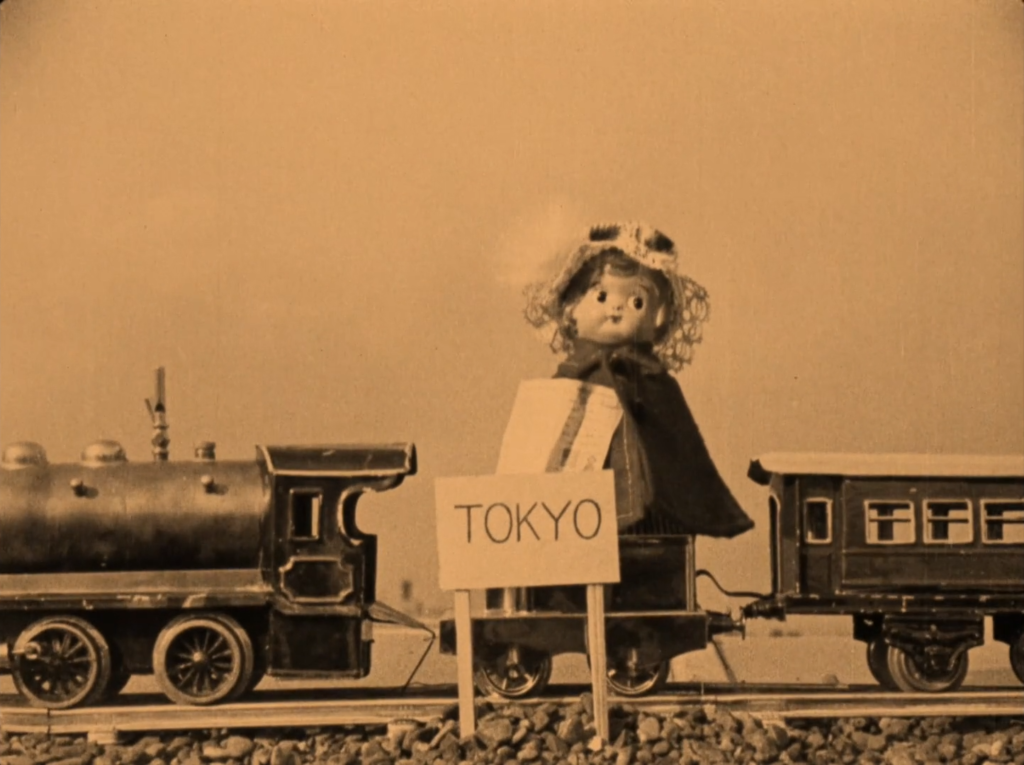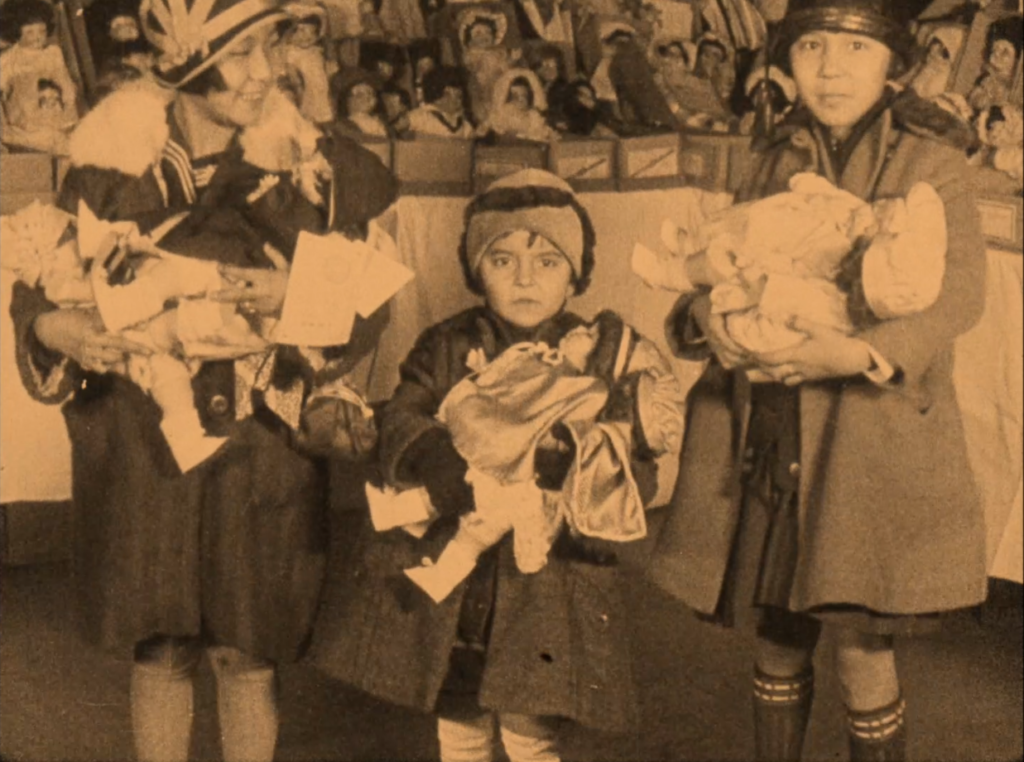
Doll Messengers of Friendship (1927, 9 min, 35mm, tinted, silent, 24 fps)
ABOUT THE FILM
With the Great War and its senseless slaughter still a fresh memory for millions around the world, the 1920s saw a resurgent appetite for pacifism. One of the most notable and charming embodiments of this tendency was a doll exchange between the United States and Japan, instigated in 1926 by American missionary Sidney Gulick. In the interregnum between the passage of the Immigration Act of 1924, which applied draconian limits on Asian immigration to the US, and Japan’s own increasingly imperialist actions in China and elsewhere in the early 1930s, a dedicated few believed that relations between America and Japan could be substantially and enduringly improved by a goodwill project with buy-in from rising generations in both countries.
In spite of the best efforts of several scholars of Japanese culture and politics and the gambit’s novelty as a tool of international cooperation, the doll exchange is largely a forgotten episode today. The doll exchange and its lofty aspirations are brought vividly alive in Doll Messengers of Friendship, a silent film that commemorates the program. Conflicting information exists about this film’s original production and exhibition, but the extant fragment in the collection of Chicago Film Society provides an invaluable glimpse of this hopeful chapter in American-Japanese relations.
The doll exchange itself was organized by Gulick’s Committee on World Friendship Among Children, though seemingly realized on a somewhat decentralized basis by various churches, youth groups, scout troops, and recreational clubs across the US. Doll production reflected the dominant gendered division of labor of the era, with girls sewing the dolls while boys wrote up pleas for the dolls’ passport visas. Over 12,000 dolls would be shipped to Japan in 1927, where they would be feted by dignitaries, government officials, and school children in lavish ceremonies.
The Japanese industrialist Eiichi Shibusawa, who had pushed the adoption of many Western business practices during the modernization of the Meiji era, organized a parallel effort which saw the shipment of 58 Japanese dolls to the United States. Not cobbled together by school children as their American counterparts had been, the Japanese dolls were works of high art in their own right, with many entering museum collections in the US.
The tour of Japanese dolls in the US was often accompanied by all manner of ceremony, with songs, poems, and pageants supplementing the official presentation of the dolls to American school girls. Several stops on the tour also included the projection of Doll Messengers of Friendship, the film that celebrated the contributions of American school children and documented the American dolls’ reception in Japan.
Contemporary sources offer conflicting information about the film’s original length. The 1930 book Dolls of Friendship, published by “Friendship Press” on behalf of the Committee on World Friendship Among Children, includes a sample program for the American tour, which includes “MOVING PICTURES, The Welcome in Japan to America’s Doll Messengers of Friendship. (Thirty minutes.)” (The same volume cites the assistance of Carl E. Miliken, secretary of the Motion Picture Producers and Distributors of America, but provides no further detail about the production of the film itself.)
Meanwhile, the collected correspondence of Eiichi Shibusawa suggests that there may not have been a fixed, integral form of the film at all, referencing a Boston screening “combining the four reels which had come from Japan showing the welcome reception in your country.” (In this era, a reel is generally assumed to correspond to approximately ten minutes of screen time.)
Still another source, the Eugene Register-Guardian, noted in its issue of 10 May 1928 that the Oregon city’s doll ceremony would not be accompanied by a motion picture and provided the only contemporary information about the original print run when it explained that “Eugene is the only city on the coast to request one of the five films that were made, and the expense would be too heavy to bring it from the east for a single showing.”
Following the tour of the Japanese dolls, the film did continue to circulate in non-theatrical settings. The surviving print carries a YMCA Motion Picture Bureau slug and the 1930 edition of 1000 and One: The Blue Book of Non-Theatrical Film lists the YMCA as the sole rental source for the film. (This catalog entry lists Doll Messengers as a two-reel film, albeit in 16mm.)
The extant copy of the film includes the opening main title, but does not include an end credit. The film plays as a coherent whole, but is likely missing several minutes of footage.

ABOUT THE PRESERVATION
With funding from the National Film Preservation Foundation, Chicago Film Society has commissioned a new 35mm duplicate negative of Doll Messengers of Friendship at Colorlab. This new, black-and-white preservation master allows for the creation of new 35mm prints that recreate the original tinting using color injection (aka the Desmet Method).
Preservation funded by the National Film Preservation Foundation
Special Thanks: Joann Bernardi, Allison Remy Hall, Jun Inoue, Hiroaki Koresawa, Hirokazu Miyazaki, Mike Quintero
